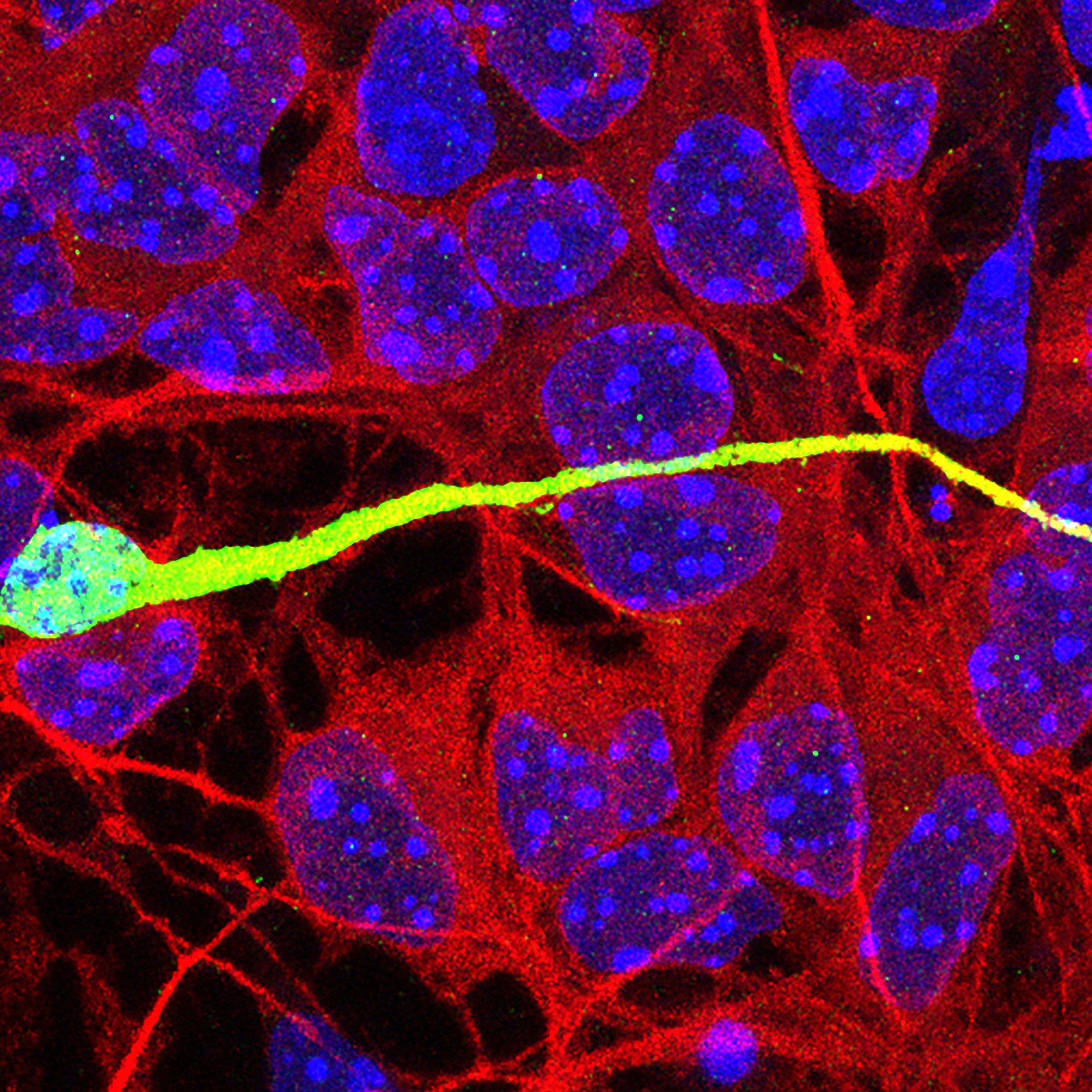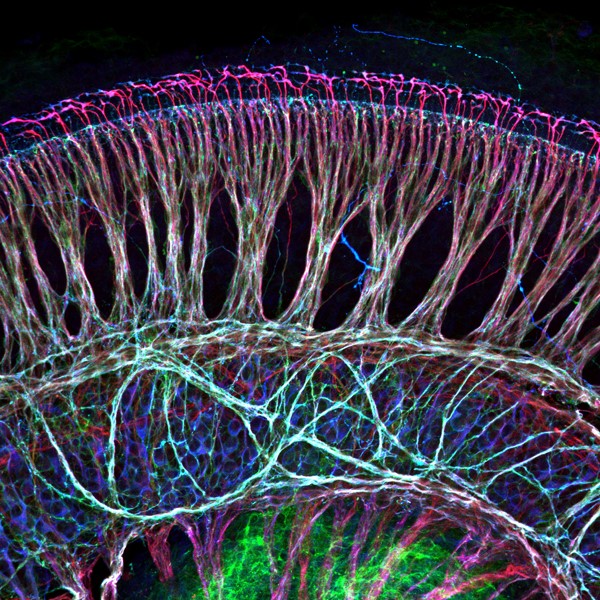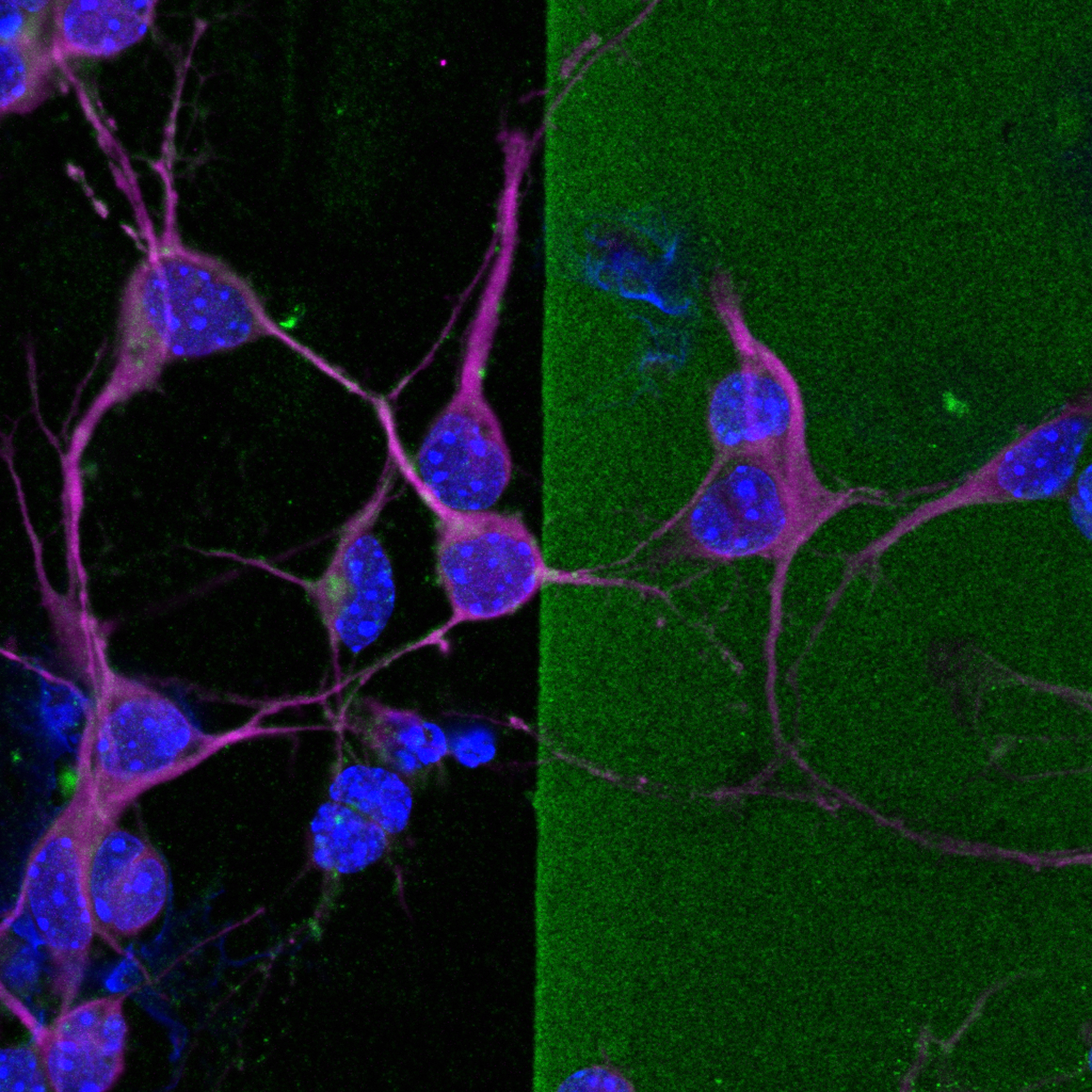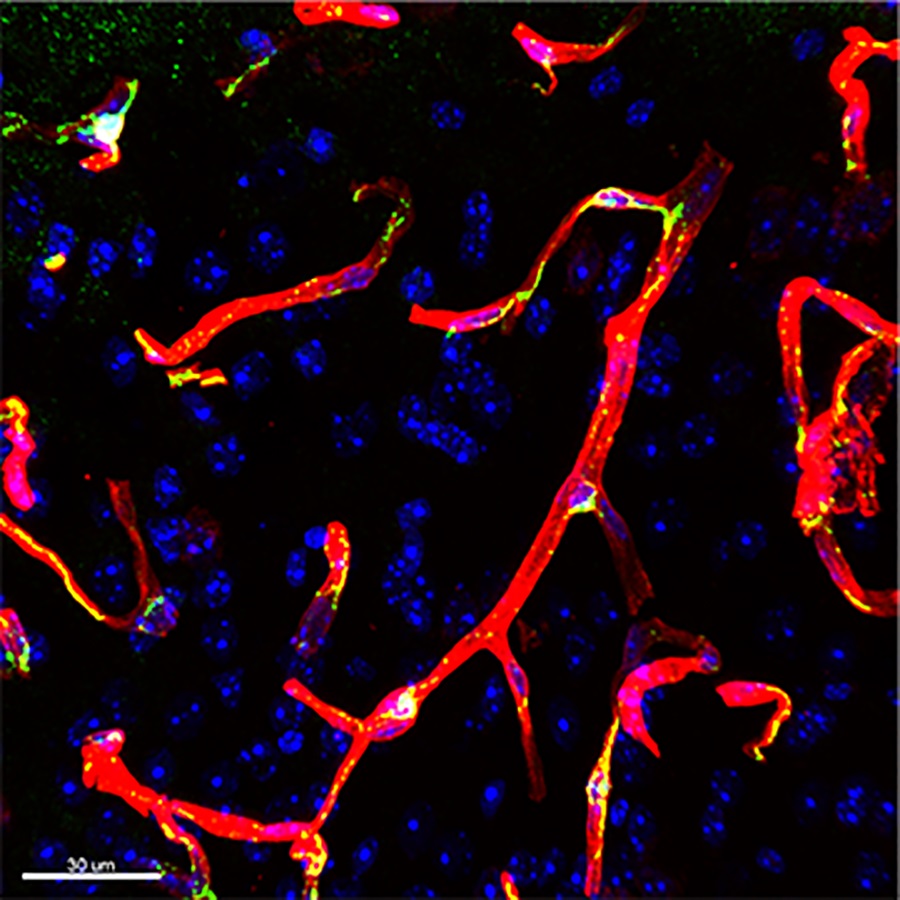This image shows an interneuron migrating on a monolayer of cortical feeder cells in an in vitro co-culture assay.
Authors show that microbiome depletion by antibiotics in rats produces widespread changes in the recruitment of neuronal ensembles that are activated by oxycodone intoxication and withdrawal.
This image shows an immunostained whole-mount preparation of a mouse cochlea.
Authors highlight a deficit in motor skill consolidation-dependent synaptic plasticity at motor cortex to dorsal striatum synapses that represents an early biomarker for Huntington’s Disease in mice.
This image shows MAP2+ neurites from cultured immature cortical neurons extending into a stripe of chondroitin sulfate proteoglycans (CSPGs) treated with chondroitinase ABC, an enzyme that abolishes CSPGs
Reginald Cannady and Sudarat Nimitvilai-Roberts tell the story about their co-first author paper about time-dependent changes in cellular excitability of neurons in the prefrontal cortex following chronic voluntary ethanol drinking in mice.
Authors demonstrate that epidermal growth factor receptor antagonism not only blocks morphine tolerance but also restores the effectiveness of opioids against neuropathic pain.
See the most-shared articles of July/August 2020; Volume 7, Issue 4
An image of blood vessels in a region of the parietal cortex of a mouse with laminin, pericytes, and cell nuclei visible.
Authors highlight TrkB-dependent molecular pathways as critical for the maturation of inhibitory interneurons and support the hypothesis that loss of BDNF signaling in cortistatin interneurons leads to altered excitatory/inhibitory balance.
FOLLOW US
TAGS
CATEGORIES








 RSS Feed
RSS Feed




